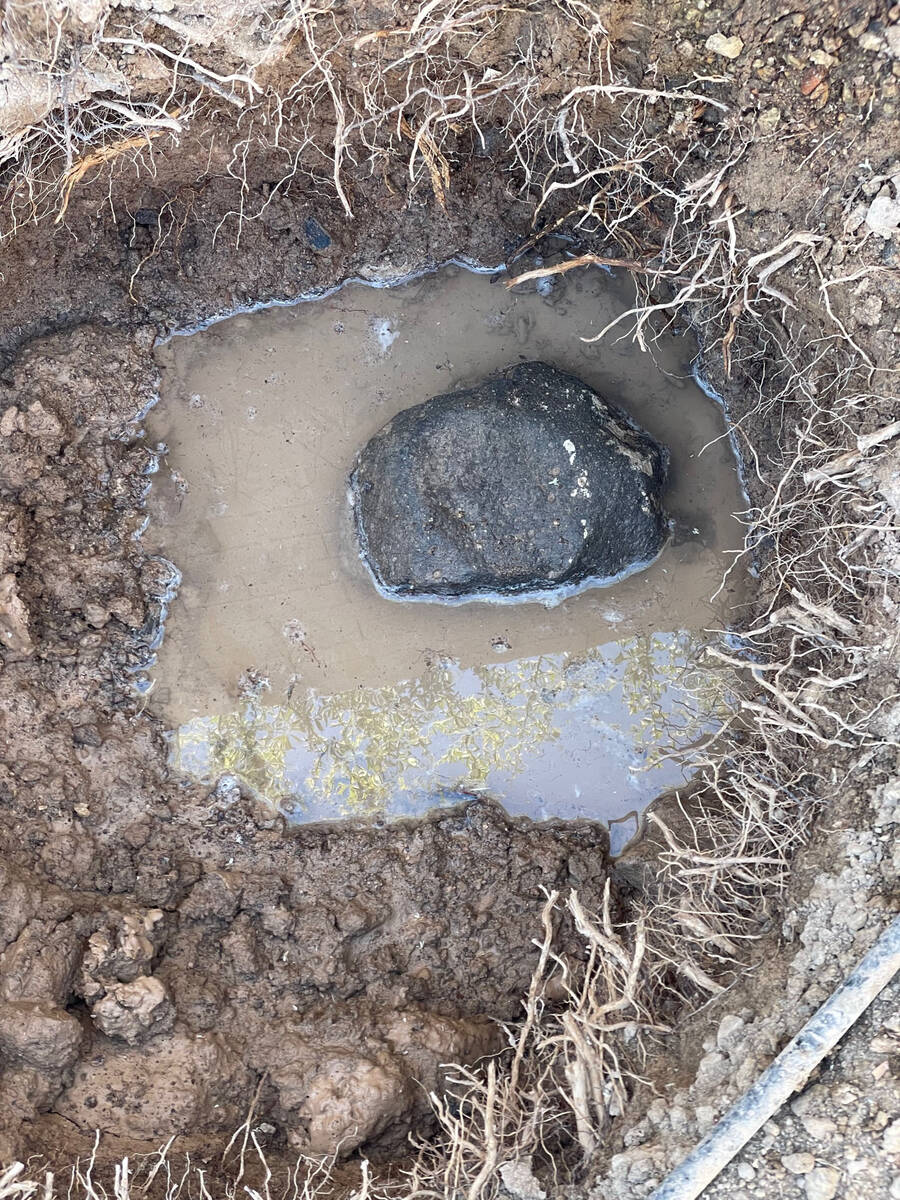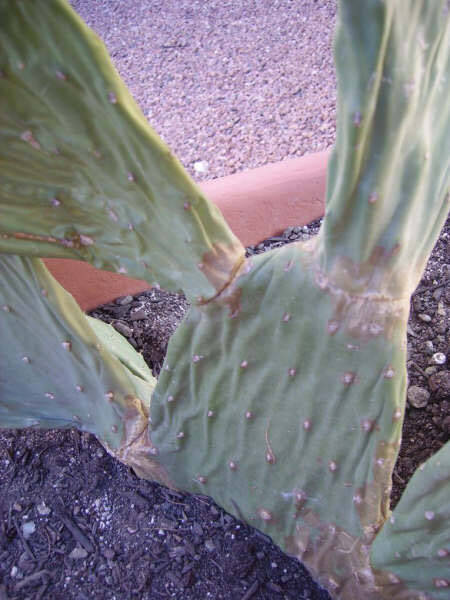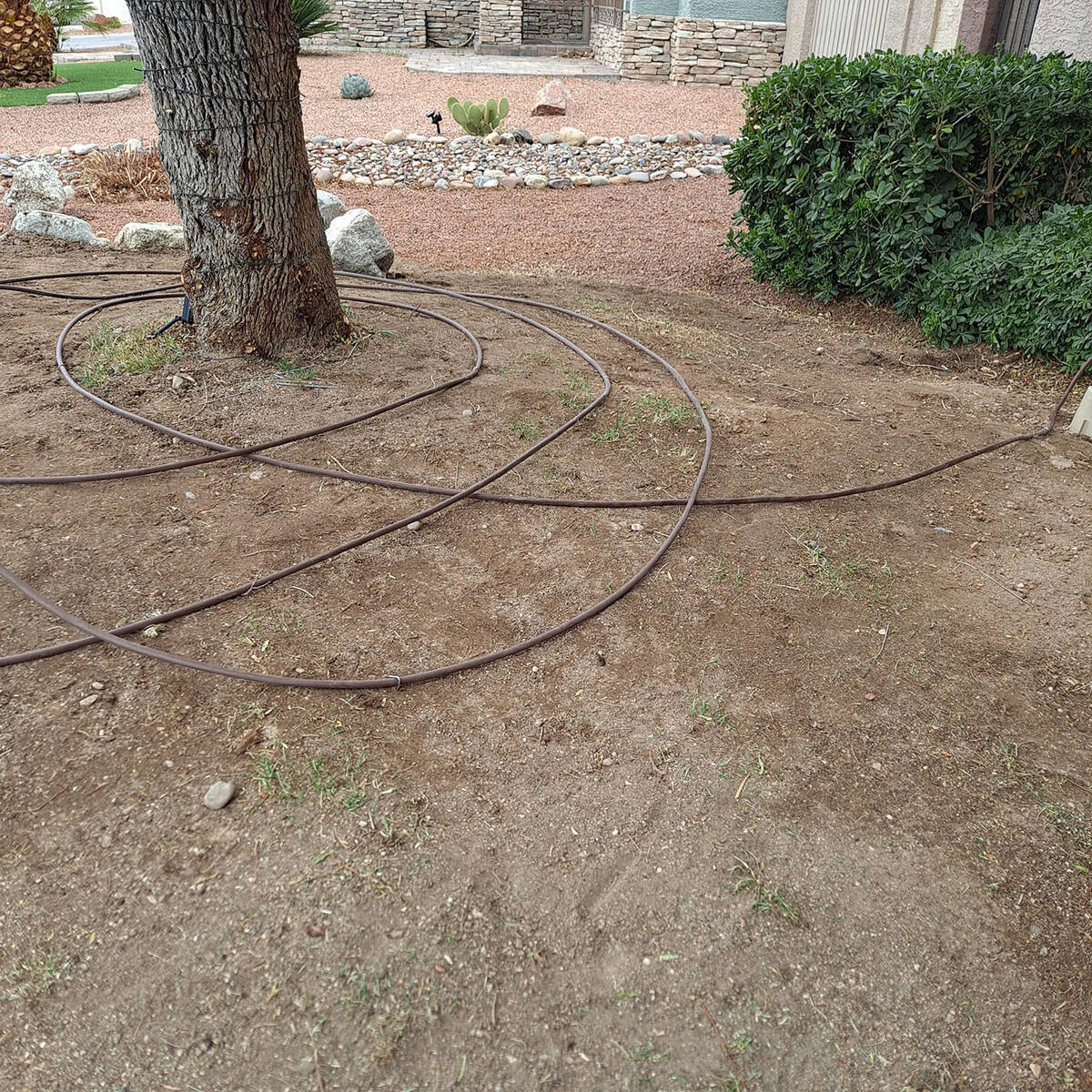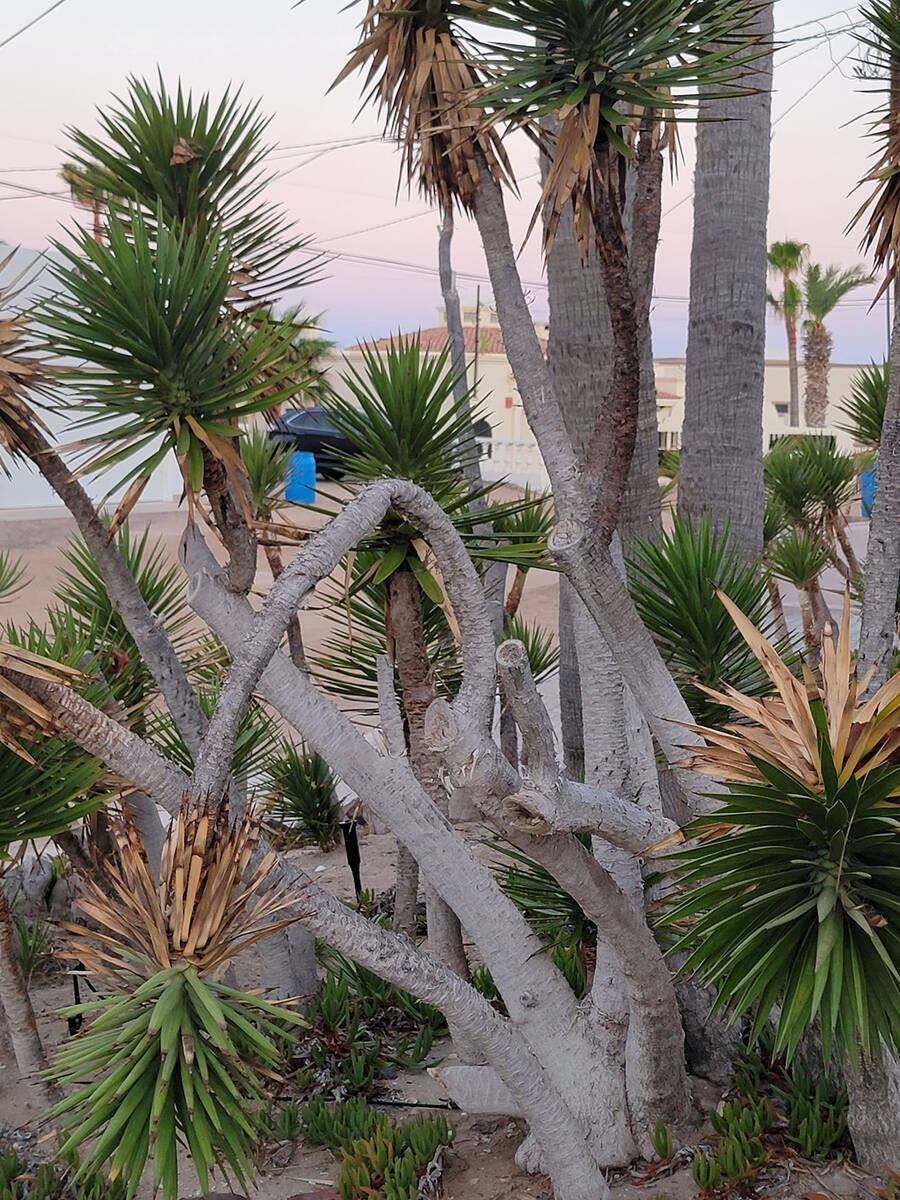Plants grow best in soil free of rocks
Q. Large rocks are difficult to dig out, let alone remove from a hole. But large rocks improve the drainage of water. Don’t know if large rocks are typical for most backyards in the (Las) Vegas Valley. I usually add fast-acting gypsum to the bottom of the hole and water it in for a couple of weeks, letting it dry between soakings. The previous gardener added soil and planted on top of the rocks.
A. The general recommendation is to not have rocks greater than golf ball-sized so that lawn grass roots have a place to grow. Trees and shrubs have similar guidelines. It may be obvious that the more rocks you have in the soil, the less water is held by that soil.
Some soils are very rocky, some soils are slightly rocky and there are some desert soils that have few, if any, rocks in them. The rockiest soils are usually close to a hill or mountain. Soils that are relatively rock-free are found near stream beds or artesian springs. As you get closer to the old artesian springs or streambeds (there were artesian springs in the Meadows area of Las Vegas and the Las Vegas Wash contributed water to Lake Mead) the soil becomes less rocky. Hopefully, you can remove as many of the large rocks as possible before planting. Use a planting bar and pry out the large rocks.
For vegetables I recommend 10 or 12 inches of rock-free soil because carrots and other root crops get branched or forked roots if they grow around them. Crooked spears on asparagus are common when spears must grow around rocks in the soil or are damaged on one side from chewing animals like bunnies.
The most common recommendation when planting landscapes has been to remove rocks, where roots must grow, larger than a golf ball. When growing vegetables, it’s best to import rock-free soil or grow plants in containers without any rocks in them.
By the way, there are pockets of gypsum (calcium sulfate) all through Las Vegas soils. Gypsum is mixed into soils, watered and leached to lower damaging sodium levels. I don’t know why you are adding gypsum to a planting hole. It will not hurt plants if it is not needed or you add too much of it.
Q. I bought a house about six months ago across the street from the Sea of Cortez in northern Mexico. We have beautiful yuccas but some of them are bending in half, leaning over. Not sure what we are doing wrong. The recently planted stalks feel extremely wet, almost as if I would squeeze hard, water would come out. Any ideas of why this is happening?
A. Bending of stems of established plants, when there is plenty of light, is normally a sign of watering too often. You will see this in Joshua trees, Italian cypress and other plants that grow when soils are moist. The bending of stems is due to succulent growth.
Desert plants continue to grow if water is present and “rest” when it gets cold. If the already moist soils stay wet, then the plant roots and lower stems eventually rot. With desert plants like many of the yucca, the roots suffocate first. This cuts off the flow of water to stems. Then the stems die.
There are two types of overwatering: watering frequently and giving a plant lots of water it can’t use. The most damaging to desert plants is watering frequently. The second kind of overwatering wastes water but usually doesn’t damage the plant. This type of overwatering wets the soil beneath roots where the roots can no longer use it. When watering desert plants it’s best to water them less often. When you do water, “water deep” so all the supportive roots get wet.
The second mistake people make with new plants is not watering wide enough. Growing roots into the surrounding soil requires watering a large area under the plant. The larger root system helps “stabilize” the plant during wind. Desert plants in the wild have roots that can grow a long way from their trunk to harvest sparse rainfall. Once plants begin to grow new roots into surrounding soil, then this water forces roots to grow further and “chase the water.”
The simplest way to handle the watering of cacti is a stationary sprinkler on the end of a hose. This method of irrigation spreads the water over a large area; the larger the area, the more water is needed to get it deep. Water very slowly, perhaps an hour on your first try, but not very often.
Q. You talk about watching plants. What do you mean? I watch my plants all the time and don’t see anything.
A. Desert plants have different methods they use when water is not available in the soil. Some plants such as cacti store water in their stems. They use this water when the soil water is not enough. This causes their previously water-filled stems to shrink and start to shrivel. When stems start to shrivel, cacti enter their survival mode. Water when you see any of this.
Other desert plants, like desert southwest mesquite and palo verde, drop their leaves when soil moisture is lacking. If water remains scarce longer than this, their branches start dying. That’s their “survival mode.” Water many of our desert plants when leaves drop and the canopy begins thinning. When the soil gets wet again, they produce new leaves, growth and may even flower.
When plants receive most fertilizers, the leaves first become a darker green about a week or two before growth starts. New growth during the following weeks is plentiful. The plant canopy increases its density because of water and nitrogen fertilizer. It is easy to miss if you don’t pay attention.
Fertilize desert plants when leaves turn from deep green to a medium green. Some plants are fertilized several times each season to “push” new growth and increase their canopy density. Other plants are fertilized only once each season. Some are seldom fertilized. Fertilizers enhance what a plant does normally. It’s not an on/off switch.
Desert plants “talk to you” if you just look at them. Shriveling stems of cacti, leaf drop or branch dieback of trees and shrubs, and fullness of a plant canopy are all signs desert plants need a drink. A deep drink. And maybe some fertilizer. Water long and slow enough so the water wets all their roots and moves the fertilizer with it.
Q. I was reading about splitting my irrigation system into hydrozones. Seems to me that I can just add more drip emitters to my plants that need more water (mesic plants).
A. That won’t work. Adding more drip emitters doesn’t change the frequency between irrigations. Adding more drip emitters adds more water during an irrigation. The only way to change the frequency of watering is at the valve. When desert or xeric plants are on the same valve as mesic (nondesert plants), then a signal “when to water” is triggered by the nondesert mesic plants.
Hydrozoning is watering desert plants separately from nondesert plants.
First, learn which of your plants are xeric (true desert plants) and which of your plants are mesic (true nondesert plants). That information is not available on most plant lists or from most nurseries. A reliable place to find it for desert plants is here or search on the Internet for “Arizona Martins Library of Desert Plants.” Many of the plants mention if they are xeric or mesic in their water use.
A valve should be dedicated to only xeric trees and shrubs and another for xeric flowers. The amount of water each receives can be adjusted by adding more drip emitters. These emitters should be spaced 18 inches apart and water at least half the canopy area.
A separate valve should be dedicated for mesic trees and shrubs and another valve for mesic flowers. Remember that drip irrigation requires filtering the water (water filter), a device to lower the water pressure (pressure regulator), and some way to regularly flush the drip tubing. If you don’t know how to do this, then hire an irrigation professional to design and install a drip irrigation system.
Bob Morris is a horticulture expert and professor emeritus of the University of Nevada, Las Vegas. Visit his blog at xtremehorticulture.blogspot.com. Send questions to Extremehort@aol.com.











